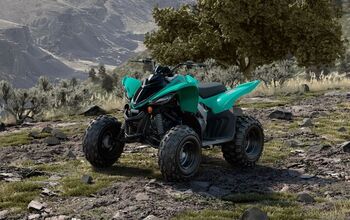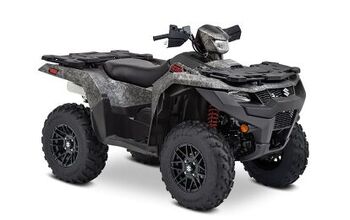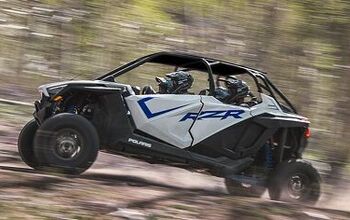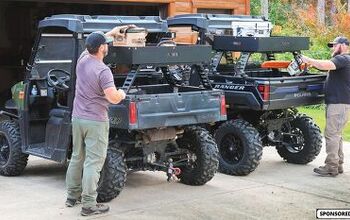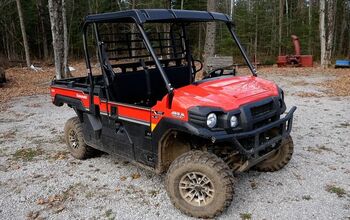Dust, Mud and the Fly Racing Formula Carbon Fiber Helmet
We put Fly Racing's most advanced helmet to the test
Off-road helmets are a must have piece of safety equipment for every rider and passenger. We all know this, too. Anyone who has ever taken a serious spill on an ATV, UTV dirt bike or other fun toy, and had any sort of contact with his/her head, can attest that helmets are truly necessary. Helmet technology has taken massive leaps forward in safety lately. The Multi-Impact Protection System, or MIPS system was adapted by most of the manufacturers, but some have looked to surpass it, looking for ways to offer more protection. One of the latest helmets to offer extended protection is the new Fly Racing Formula Carbon Fiber helmet. We’ve been testing one for a while now and feel it is one of the best carbon fiber helmets you can buy.
Protecting Your Melon

Any helmet that is sold has to meet minimum D.O.T. standards for safety, meaning that in an accident, there is a set amount of protection for impacts to the main part of the head inside the helmet. There are other organizations that came out with stricter standards for improved safety, and premium helmet companies pushed to meet or exceed those standards as well. But still, the main focus of these standards focused on the main impact area of the head and helmet. As off-roaders, we all know that in an accident, you seldom just bump your head in one area. There are other impact areas as you roll out from the crash. Where MIPS came in, was to start looking seriously at those other areas of impact and working to reduce brain damage from those hits.
How Safe is a Fly Racing Formula Carbon Fiber Helmet?
The Formula goes a huge leap beyond. It starts with Fly Racing’s Impact Energy Cells. Made by RHEON, these Impact Energy Cells maximize absorption of low speed linear and rotational impacts. The goal is to reduce the force and trauma transmitted to the brain. You can see the Cells throughout the helmet. They are made from an elastomer matrix that lets the Cells act like shock absorbers for your head. It is extremely cool technology.
Fly Racing didn’t stop there, however. It also employs what it calls Conehead EPS Technology, which provides a softer liner. The EPS cones work to absorb and manage the force of impact more efficiently. Throughout the Formula Carbon Fiber Helmet, Fly identified six critical zones that were fine tuned to have a progressive response to low- and high-speed impacts. These cones disperse impact force across the liner and away from your head, while at the same time, giving you more of a “cushion” so to speak, during the accident. Fly combined this with expanded volume EPS throughout the strategic areas of the helmet. The result of all of the technology used in the liner is that the Formula provides more safety for your brain. That sounds like a big deal to us!
How Strong is a Carbon Fiber Helmet?
Of course, the best liner in the world is useless if the shell of the helmet isn’t on par. You should know that the Formula Carbon Fiber helmet has a 12K carbon fiber outer shell. Like aluminum or steel, there are different grades of carbon fiber, and 12K is right at the top in terms of strength and weight reduction. For example, a size medium Formula Carbon Fiber helmet weighs just 1,290 grams. It even has titanium alloy D-rings for reduced weight. That puts this helmet in at well under three pounds. But the shell is very stiff, too. 12K carbon fiber has amazing penetration resistance. Having worn a helmet that had a rock break through in a crash, we can attest to how not fun that is. Still that helmet was better than not wearing one. The Formula Carbon Fiber helmet is MUCH stronger than that fiberglass-shell helmet and weighs less than half as much.
Need further proof of the strength of the Formula Carbon Fiber helmet? If you follow motocross, you know who Weston Pieck is. He races for the Joe Gibbs Racing Factory Suzuki team. Last winter during a pre-season race in France, he was involved in a crash and another rider landed his motorcycle on Pieck’s head. Pieck did suffer from serious injuries, and is still recovering from damage to his eye. However, after a 250-pound motorcycle and a 150-pound rider going 40 miles an hour coming down off a jump landing on his head, he’s very much alive. He was wearing the Fly Racing Formula Carbon Fiber helmet.
How Good is a Fly Racing Formula Carbon Fiber Helmet in Hot Weather?
Fly uses what it calls True Functional Ventilation (TFV) systems in its helmet designs. What it basically means is, when you’re in motion, air is passed through the front vents, through the interior of the helmet, and then pushed out of the rear exhaust vents. The EPS liner has air channels molded in to allow for air movement. With the Formula, you seriously feel air flow when you’re riding. It’s not just marketing hype. With our tests, we felt more true air movement with the Formula than with some of the competitor’s helmet offerings. We rode in 80+ degree weather with high humidity and felt comfortable in the Formula. Fly also offers a cold-weather kit, with a breath guard and foam plugs for the vents.
Does the Formula Helmet Fit My Head?

One of the most important aspects of a helmet is fit. It has to fit your correctly to be effective, and it has to be comfortable to wear, or you won’t want to slide your melon into it. We’ve worn a lot of different Fly Racing helmets over the years, and have always liked them. We have also worn a lot of other helmet brands over the years and some have fit better than others. The Fly Formula Carbon Fiber helmet is, as of now, the best-fitting helmet we’ve tested. The weight savings are noticeable, and the way the interior cradles the head is extremely comfortable. This is easily a helmet we could wear all day and not grow tired of having it on our heads.
Because of the Energy Cells, the liner is shaped completely different than any previous Fly lid. It connects with your scalp in different places and this also helps with the ventilation. The cheek pads are firm, yet comfortable as well. They have quick release tabs to help emergency responders get to you in the event of a bad accident. The base of the helmet has a Clavicle Relief Zone with extra EPS padding to protect you from a clavicle injury in an accident.
How Much Does a Fly Racing Formula Carbon Fiber Helmet Cost?
The Fly Racing Formula Carbon Fiber helmet comes with a Fly Helmet Garage Helmet Bag that is padded and has pockets for goggles and accessories. The lid also comes with a spare visor that matches the helmet in case you bust up the first one. It’s not the cheapest helmet out there, but with an MSRP of under $650, it’s not the most expensive either.
100% Goggles for Sand and Mud
In testing the Formula Helmet, we also had the opportunity to try out some sweet goggles from 100%. The 100% Accuri Sand goggles are perfect for riding in sandy and dusty conditions. Most goggles will block MOST of the dust you encounter on a dusty trail ride, but not all of it. The foam around the frame and against your face is usually just too porous to stop all of the particulates from getting through. The Accuri Sand Goggles have a specially-designed, denser foam that stops those particulates from getting through. Being a 100% goggle, the field of view is outstanding from within the goggle, and the Sand model comes with a tinted lens and a clear, spare lens. We’d also add that the OTG Accuri goggles from 100% are the first goggle that truly fits over glasses comfortably.
The downfall to the Sand goggle is, if you encounter mud, you don’t want to be wearing them. Not because it won’t work, but the mud can damage the foam. Luckily for mud riding, there is the 100% Strata Forecast system, which combines the 100% Strata Goggle with a roll-off system. The goggles come with a 45mm-wide roll of system and two rolls of spare film. With these two different goggles, we found that we’re ready for anything.
Who Makes a Good ATV Mask for Dust?
Since we were riding in some serious dust, we got to test out another amazing product that worked well with the Formula helmet. The VENT mask comes from Training Mask, the company that produces the elevation training systems that you see so many athletes using. That system mimics the effects of higher elevations to force your lungs to work harder and therefore give you better oxygen efficiency and performance. The VENT mask can be used as an elevation trainer too, but the thing we really liked is it has a pure carbon filter system that carries a N99 filter rating for eliminating particulates. The base setting of the VENT mask offers no resistance and it gives you pure, clean air to breathe while riding in even the dustiest conditions. We have tried several different filter masks and nothing else comes close to how well this mask works, and you can use it later for your workouts to get stronger lungs. Good stuff.
We are committed to finding, researching, and recommending the best products. We earn commissions from purchases you make using the retail links in our product reviews. Learn more about how this works.
Derrek's love for all things ATV started when he was a mere 11 years old, growing up on his family farm. His mom gave him and his sister a choice - get a horse, or a three-wheeler. The sister wanted the horse, and Derrek wanted the ATV. Luckily he won out, and was soon burning up the trails on a Yamaha Tri-Moto 200. By the time he was 14, he had saved enough of his own money by working on the farm and in his folks restaurant to buy a new 4-wheeler. That happened the day he and his mom were driving past the dealership and saw 1987 Banshee. His mom had no idea what he was buying, and he never looked back. He's been riding ever since, and been writing professionally for many years. He has ridden all over North America and been behind the controls of just about every machine out there. And yes, he still has his 1987 Yamaha Banshee.
More by Derrek Sigler





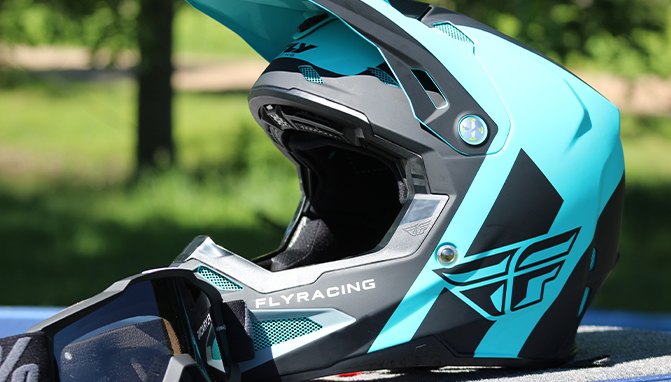












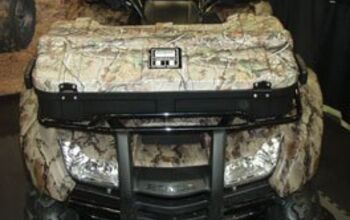


![Derek Guetter Crashes During Backflip [video]](https://cdn-fastly.atv.com/media/2022/10/24/8744073/derek-guetter-crashes-during-backflip-video.jpg?size=350x220)



